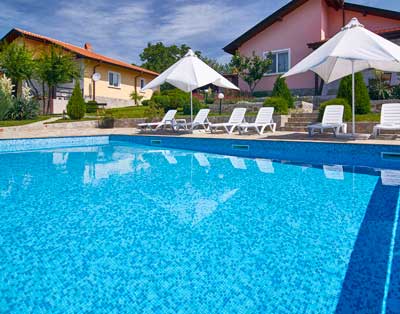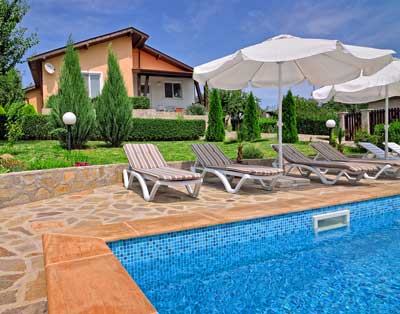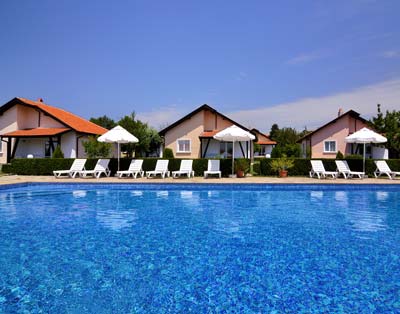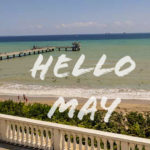Archeological places near Burgas
The Bourgas region has been a crossroad of ancient civilizations since the VII – V century BC.
Evidences for that can be seen in each museum in the area: items from the prehistoric times (IV-V century BC), artifacts from Thracian times, from the Hellenic colonization of the Black sea and from the Roman Empire.
Many archeological and historical remains from the different civilizations which have lived here over the years can be seen in the old towns of Nessebar, Sozopol and Pomorie, as well as in Strandza Mountain.
Here are two suggestions from where to start exploring the archeological heritage of Bourgas region: Beglik Tash and The relics of St. John the Baptist in Sozopol
Beglik Tash – the Bulgarian Stonehenge

Beglik Tash is an incredible megalithic complex – a stone phenomenon, situated 5-6 km north of the town Primorsko. This natural rock formation of huge monolithic blocks of volcanic origin which were formed after a volcano eruption during the Mesozoic era was used as a sanctuary and observatory by the Ancient Thracians. Beglik Tash is the most ancient Thracian sanctuary in South East Thrace and the Black Sea region, dated from 14th century BC and functioned up to the 4th century AD.
Book your holiday villa in Bulgaria
It is quite difficult to find the complex as there are no good signs indicating its location. To reach the sanctuary you have to drive by the Aqua Park and the Horse riding base in Primorsko, and then to continue by foot on a dirt road through the woods. In less than a mile, amid dense deciduous forest and near the ruins of the ancient city Ranuli you will find a magical place where religious rituals where practiced. Some experts believe that Beglik Tash has served the cult of the Thracian God of Sun, but some findings prove also rituals related to the Mother Goddess. The total area of the complex is 6 acres.
In the eastern part is located the “Marriage bed” where the high priest and priestess have probably recreated the divine union between the God of Sun and the Mother Goddess.

After this first group of stones showing the "Divine union", come two altars and a priestly throne. On the sacrificial stones were found no traces of blood, so it is assumed that the tribe has only sacrificed plants to the Gods – grapes, figs, etc.


Next to them is composed a Sundial, consisting of a main stone, curved in a specific way, and six smaller stones. Unfortunately, in the course of time, the highest stone had fallen down and the domino effect had pushed all other stones to the ground. The reconstruction of the composition is forthcoming.

The Labyrinth is a stone approximately 9 meters high, with a carved slit oriented east-west, which symbolizes the entrance to the underworld. The passage is very narrow and only the righteous can go through the slit and learn from the wisdom of our ancestors.



The Apostle Tash is a huge boulder that rests only on two points. Between the points there is a horizontal niche big enough for three people to lie in. This is not the natural situation of the stone, it was placed here by the Thracians, who also carved the niche. The huge stone weighs about 100 tons and it is unclear how it was fixed here by ancient builders. At sunset the sun’s rays penetrate the cavity at its base, creating a strange magical lighting on the east side.

A little deeper into the forest lies an open residential building, probably belonging to the priest, who was taking care of the sanctuary.

Offiial site: Beglik Tash on Bulgariatravel.org
The relics of St. John the Baptist in Sozopol

In year 2010, a group of Bulgarian archeologists making researches on the St. Ivan Island near Sozopol came across a remarkable discovery. They found a sealed reliquary made from alabaster embedded in an altar in the ruins of the ancient island monastery. The relic urn contained six human bones: a knucklebone from the right hand, a tooth, part of a cranium, a rib, and an ulna, or forearm which were later declared to be authentic mortal remains of St. John the Baptist.

As the discovery became a subject of huge interest, much skepticism and even scam allegations, the relics were sent for laboratory analysis to the Universities of Oxford and Copenhagen. After carbon dating tests and DNA analyses, the experts have confirmed that the relics found in Sozopol belong to St. John the Baptist. According to the research teams, the isotope analysis made at the Oxford laboratory suggested that the bones belonged to an individual who lived in the early 1 c. AD, a period that corresponds to the biblical story of St. John the Baptist. The researchers have even been more specific by pointing the time from the 5th to the 75th year AD. Moreover, the scientists from the University of Copenhagen have successfully restored the full mitochondrial DNA genome of three of the bones and have confirmed that they belonged to the same individual, who was male. What is more, the experts have identified a family group of genes which is among the most common ones in the Middle East, the region of St. John the Baptist. The archaeologists who originally discovered the bones also found a small box made of hardened volcanic ash buried nearby in an older part of the church. The case had an ancient Greek inscription that mentioned John the Baptist and his birthday.

Nowadays the relics of the saint can be seen and worshipped in the temple of St. Cyril and St. Methodius in Sozopol. More Antique Sozopol



The relics of St. John the Baptist in Sozopol in the international news















